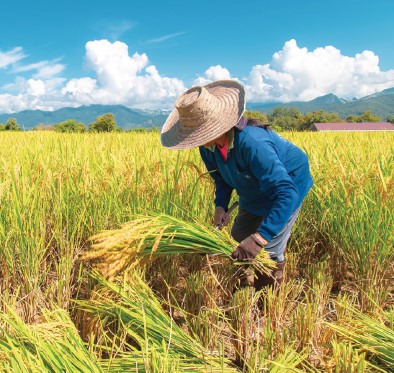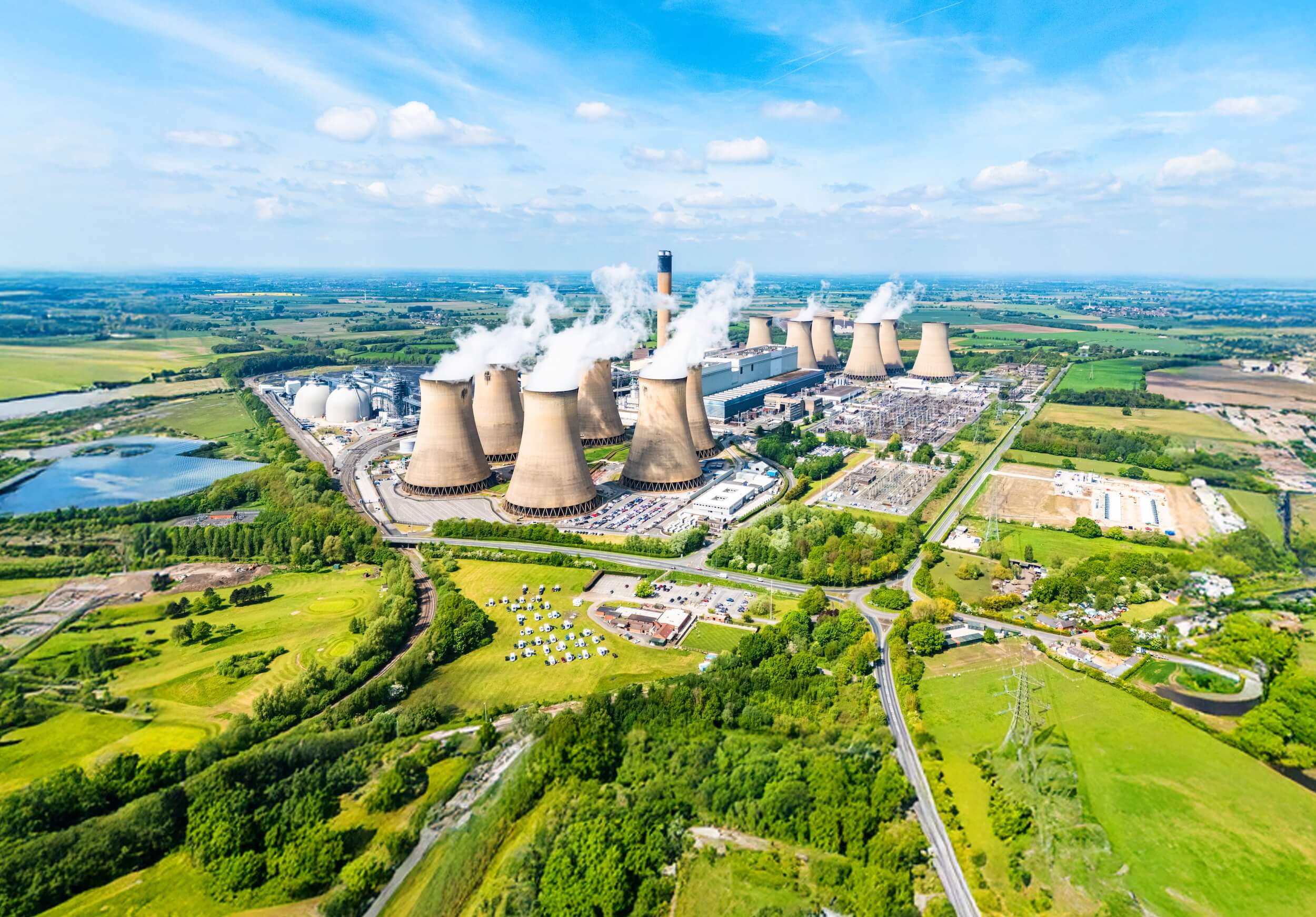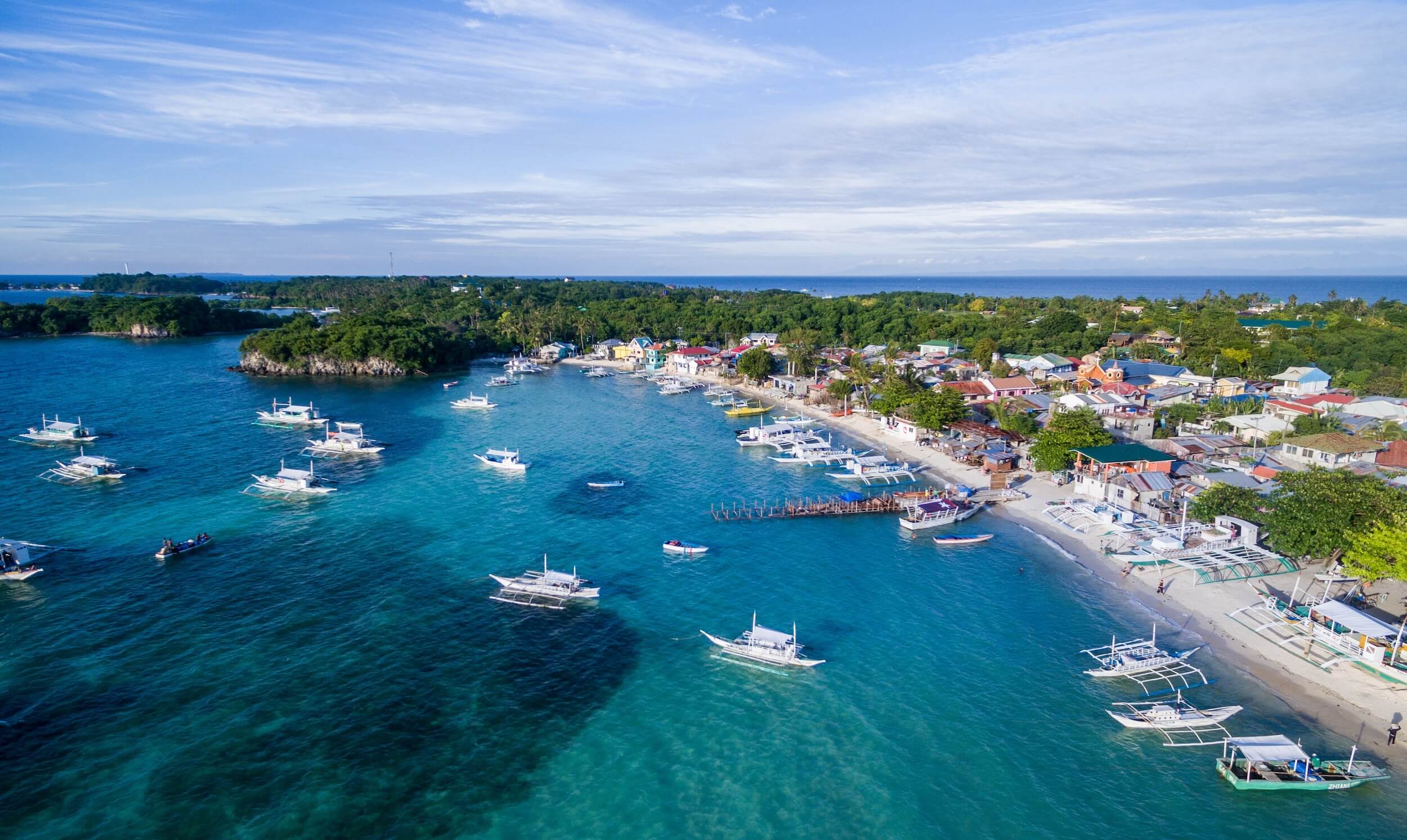



ASEAN is taking steps to ensure food security in the context of climate change, which is threatening food systems in four dimensions: food accessibility, food availability, food stability, and food utilisation.
More than 50 percent of Viet Nam’s rice is produced in the Mekong River Delta (or Đồng bằng sông Cửu Long), providing livelihood to millions of Vietnamese farmers and their families and contributing to global rice requirements. But natural disasters brought about by climate change have severely impacted agricultural production in the Mekong—salinity intrusion and drought have plagued coastal provinces, while heavy rains have inundated provinces located upstream.
The situation in the Mekong echoes the predicament of many other communities in the region. Southeast Asia is one of the world’s most climate-vulnerable regions, largely due to its long coastlines and the high concentration of population and major economic activities along coastal areas and bodies of water.
Average temperatures in Southeast Asia have risen every decade since 1960 based on the Global Climatic Risk Index compiled by Germanwatch. Higher temperatures have resulted in floods, droughts, storms, and other types of extreme and erratic weather. Myanmar, the Philippines, Thailand, and Viet Nam are among the 10 countries in the world most affected by climate change over the past 20 years (Prakash, 2018).
According to the UN Committee on World Food Security, climate change and food insecurity are two intertwined major global challenges that humanity is facing—with climate change as one of the greatest challenges to food security. In ASEAN, climate change, particularly changes in the rainfall regime and temperature, has disrupted food and agricultural production in many ways. Food and agriculture are among the more vulnerable sectors in the region in terms of threats associated with climate change. But they also offer great potential for guaranteeing food security and contributing to the attainment of the Sustainable Development Goals (SDGs).
With the spread of the COVID-19 pandemic, there is an added uncertainty and other challenges to ensure food security, and at the same time, address the impact of climate change.
ASEAN Multi-Sectoral Framework on Climate Change: Agriculture and Forestry towards Food Security
At the 14th ASEAN Summit in 2009, the ASEAN Leaders committed to strengthening food security through the issuance of the Statement on Food Security in the ASEAN Region. As a result, the ASEAN Integrated Food Security (AIFS) Framework and the Strategic Plan of Action on Food Security (SPA-FS) in the ASEAN Region 2009-2013 was adopted to “provide scope and joint pragmatic approaches for cooperation in addressing food security in the region.”
Subsequently, the ASEAN Ministers on Agriculture and Forestry (AMAF), in November 2009, endorsed the ASEAN Multi-Sectoral Framework on Climate Change: Agriculture and Forestry towards Food Security (AFCC), which covers agriculture, fisheries, livestock, forestry, and other relevant sectors such as environment, health, and energy. The AFCC was the response of ASEAN Member States to the realisation that Southeast Asia is among the regions at risk from climate change since its population relies heavily on agriculture, fisheries, forestry, and other natural resources. Since then, a number of activities, projects, and programmes have been conducted at the national and regional levels to increase the resilience of food and agricultural systems to climate change.
To support the implementation of the AFCC’s Component 4 (Developing a more comprehensive multi-sectoral strategic framework and a roadmap for implementation), the ASEAN Multi-Sectoral Framework for Climate Change: Agriculture and Forestry towards Food and Nutrition Security and Achievement of Sustainable Development Goals was adopted by the AMAF in 2018 to promote regional cooperation on matters related to food security and climate change. Various strategic actions have been proposed to mitigate the adverse impact of climate change on food security such as: (i) advancing integrated climate change mitigation and adaptation responses through landscape approaches to safeguard food and nutrition security, and (ii) initiating and sustaining comprehensive capacity development of local, national, and regional institutions to achieve food and nutrition security in the context of climate change.
As the impacts of climate change are affecting all sectors, close cross-sectoral collaboration and coordination are crucial when planning and implementing climate change responses. An ASEAN Ad-hoc Steering Committee on Climate Change and Food Security has been established to develop and implement a comprehensive strategy and roadmap through a mutual learning process on climate change and food security.
Vision and Strategic Plan for ASEAN Cooperation in Food, Agriculture and Forestry 2016-2025
Considering that the natural resource base of food, agriculture, and forestry industries in ASEAN is threatened by a range of internal factors, such as deforestation, soil erosion, and degradation of watersheds, and by external factors, particularly the effects of climate change, the Vision and Strategic Plan for ASEAN Cooperation in Food, Agriculture and Forestry (SP-FAF) 2016-2025 was adopted by the AMAF in 2015. This plan provides a platform for ASEAN to strengthen mechanisms and develop capabilities to prevent and reduce losses due to disasters and emergencies through concerted national efforts and intensified regional and international cooperation.
Various action programmes have been proposed, such as:
(i) Increasing investment in research and development (R&D) in the areas of technologies and management systems with a focus on resilience to facilitate climate-smart agriculture, land use, and fishery in cooperation.
(ii) Promoting good agricultural practices to minimise the negative effects on natural resources.
These action programmes will further strengthen food security arrangements in the region.
ASEAN Food Security Framework and Strategic Plan of Action on Food Security in the ASEAN Region 2021-2025
A new AIFS Framework and SPA-FS in the ASEAN Region has been developed to continue ensuring long-term food security and nutrition, and to improve the livelihoods of farmers in ASEAN. The AIFS Framework identifies a number of policy responses in ensuring food security, which include, among others:
(i) Increasing sustainable agricultural production and productivity.
(ii) Enhancing resilience to climate change.
Accordingly, ASEAN plans to focus on the implementation of the 2017 ASEAN Regional Guidelines on Food Security and Nutrition Policy, which serve as the general framework for ASEAN Member States to introduce, implement, and develop food security and nutrition policies, as well as the 2018 ASEAN Guidelines on Promoting Responsible Investment in Food, Agriculture, and Forestry to bring positive outcomes for food security through effective implementation of Guideline 7 to increase resilience to, and contribute to the mitigation of and adaptation to climate change, natural disasters, and other shocks.
2020 Statement of AMAF in Response to the Outbreak of COVID-19 to Ensure Food Security, Food Safety, and Nutrition in ASEAN
In response to the outbreak of the COVID-19 pandemic, which has adversely impacted food systems, the Statement of AMAF in Response to the Outbreak of COVID-19 to Ensure Food Security, Food Safety, and Nutrition in ASEAN was released on 15 April 2020. This statement aims to ensure a sustainable supply of sufficient, affordable, safe, and nutritious foods that meet the dietary requirements of ASEAN populations. The ASEAN Ministers reaffirmed their commitment to implementing the 2015 Statement of ASEAN Ministers on AMAF to improve storage, preservation, transport, and distribution technologies and infrastructure to reduce food insecurity, food nutrient loss, and waste. Necessary measures and programmes at the regional and national levels that meet the immediate food needs of ASEAN populations will be considered to increase food production and ensure food security in the region.
It is important to emphasise that ASEAN’s governments cannot ensure food security in the context of climate change and the spread of COVID-19 alone. All stakeholders and partners from different economic sectors, including farmers, producers, processors, traders, scientists, and consumers, need to be involved in the process of addressing the adverse impacts of climate change and the pandemic to ensure food security and achieve the sustainable development goals of zero hunger (Goal 2) and climate action (Goal 13).
Food Security
The World Food Summit of 1996 defined food security as existing “when all people at all times have access to sufficient, safe, nutritious food to maintain a healthy and active life.” This widely accepted definition points to the following interrelated dimensions of food security:
• Food availability: The availability of sufficient quantities of food of appropriate quality, supplied through domestic production and/or imports (including food aid).
• Food accessibility: Access by individuals to adequate resources for acquiring appropriate foods for a nutritious diet.
• Utilisation: Utilisation of food through adequate diet, clean water, sanitation, and health care to reach a state of nutritional well-being where all dietary needs and food preferences for an active and healthy life are met.
• Stability: Accessibility of adequate food at all times, including in times of sudden shocks (e.g. an economic or climatic crisis) or cyclical events (e.g. seasonal food insecurity).








